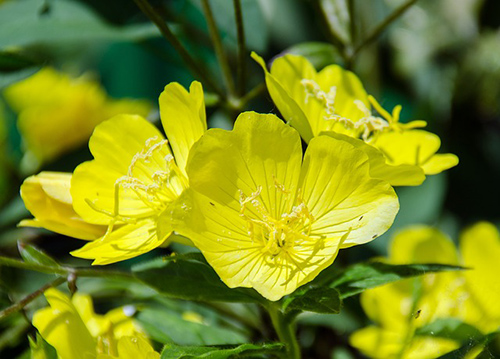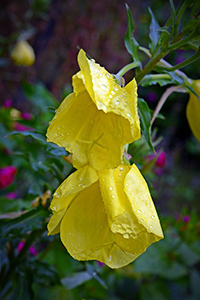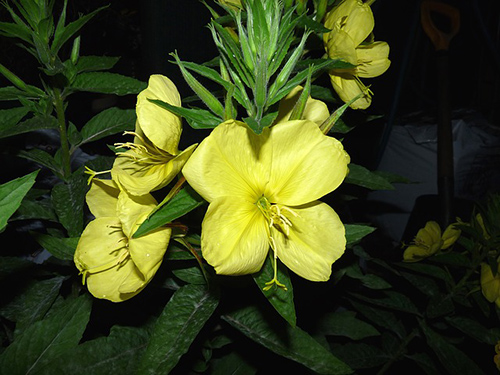Contents
The evening primrose plant, whose flowers open at night, was introduced to Europe in the early 17th century and used as an ornamental plant. Soon, people noticed that its fleshy root was tasty, and the plant was useful not only as an ornament. In central Europe, the root of the evening primrose plant became a wartime food between the 18th and 19th centuries.
- Promotes women’s health (1)
- Helps support nutritional health (1)
- May help with dry skin (1)
- Free of Hexane and all other solvent residue
- Standardized to 90mg GLA
However, the plant was hardly appreciated until today. It is still known with derogatory names in France and Spain, related to donkeys that eat it happily. Nonetheless, research conducted in the early 80s showed that evening primrose oil has interesting medicinal properties. In Germany and the United States, generally, much research has been carried out in clinics with patients suffering from circulatory, nervous, genital, and rheumatic disorders, with excellent results.

The application of the evening primrose plant, whose prestige and popularity in the phytotherapeutic world are growing, is still being investigated.
Healing Properties and Indications
The oil extracted from the evening primrose seeds is extremely rich in polyunsaturated fatty essential acids, the most outstanding of which are linoleic acid and linolenic acid, whose other chemical extract names are, respectively, cis-linoleic acid and gamma-linolenic acid. The latter plays a significant role in the body as a chemical precursor of prostaglandins, recently discovered substances with many metabolic functions.
The evening primrose plant is the only vegetable known for its notable linolenic acid, also found in human milk and indispensable for our body (an essential fatty acid).
The linolenic acid and its immediate derivative substance, prostaglandin E1, are indispensable for the stability of the cell membranes of the whole body for the development of the nervous system, for the balance of the hormonal system, and for regulating the processes of blood coagulation, among other functions. The list of diseases in which the evening primrose oil has been applied is thus very long:

- High cholesterol in the blood, and, as a general rule, in all hyperlipemia (increase in the fatty content of the blood).
- Circulatory disorders: Tendency toward high blood pressure and thrombosis due to increased platelet aggregation. It may act to prevent cerebral vascular accidents (thrombosis, cerebral hemorrhage) and heart attacks because it dilates arteries and prevents the formation of clots and platelet aggregation.
- Reproductive disorders: Dysmenorrhea, irregular menstruation cycles, pre-menstrual syndrome, sterility due to ovarian insufficiency.
- Nervous system afflictions: Parkinson’s disease, multiple sclerosis, and, generally, all afflictions caused by neuronal degeneration.
- Behavior disorders: Irritable children, nervousness, neurasthenia, schizophrenia.
- Immune response disorders: Allergies, asthma, eczema, atopic dermatitis.
- Rheumatism: Rheumatic arthritis and general rheumatic processes.
- Dermatological problems: Excess sebaceous secretion (acne), wrinkles or skin dryness, weakness of nails and hair. More than five centuries ago, the Algonquin Indians of North America rubbed their skin with mashed evening primrose seeds to fight skin blemishes.
Evening Primrose Plant Scientific Facts

- Other names: Fever plant, field primrose, king’s cureall, night-willow herb, scabish, scurvish, tree primrose, primrose.
- French: Onagre, raiponce rouge, herbe a l’ane.
- Spanish: Onagra, hierba del asno, primula.
- Environment: Native to North America, it has been naturalized in Europe. It grows on roadsides, near railroads, and in sandy, humid soils.
- Description: This biennial plant of the Enoteraceae family grows up to one meter high in its second year. It has an upright stem and large hairy leaves. The flowers are yellow with four petals and a sweet aroma.
- Parts of the plant used medicinally: Seeds.
How to use Evening Primrose
- Capsules or pills: The best way to take advantage of the properties of the evening primrose plant is by taking the oil of its seeds obtained by cold pressure as capsules, oils, or similar preparations. This is perhaps the most expensive vegetable oil known. Fortunately, the therapeutic dose is only two to four grams daily.
DISCLAIMER: All content on this website is presented solely for educational and informational objectives. Do not rely on the information provided as a replacement for advice, diagnosis, or treatment from a qualified medical expert. If you are pregnant, nursing, or have any preexisting medical concerns, talk to your doctor before using any herbal or natural medicines.
REFERENCES
- George D. Pamplona-Roger, M.D. “Encyclopedia of Medicinal Plants.” George D. Pamplona-Roger, M.D. Encyclopedia of Medicinal Plants. Ed. Francesc X. Gelabert. vols. 1 San Fernando de Henares: Editorial Safeliz, 2000. 237, 238. Print. [evening primrose plant]
- https://www.indigo-herbs.co.uk/natural-health-guide/benefits/evening-primrose
- https://www.mountsinai.org/health-library/herb/evening-primrose-oil-epo
- https://www.healthline.com/health/evening-primrose-oil
Last update on 2025-04-24 / Affiliate links / Images from Amazon Product Advertising API





